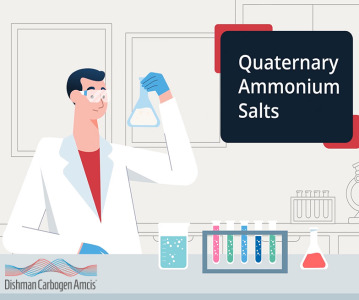FDA approves the only OTC eye drop with low-dose Brimonidine to treat eye redness
.png)
Clinical studies showed 95% symptom improvement at one minute and reduced redness for up t 8 hours.
Bausch + Lomb has announced that the FDA has approved Lumify (brimonidine tartrate ophthalmic solution 0.025%) as the first and only OTC eye drop developed with low-dose brimonidine tartrate for the treatment of ocular redness. Brimonidine, which was first approved by the FDA in 1996 for intraocular pressure (IOP) reduction in glaucoma patients, is available at higher doses in prescription eye care products.
"With this approval of Lumify, consumers have a new and unique treatment option to relieve red, irritated eyes," said Joseph C. Papa, chairman and CEO of Valeant. "Lumify is the first and only OTC eye drop with low-dose brimonidine, which has been clinically proven to be safe and effective since its initial approval as a prescription medication in 1996. We expect Lumify will be available for purchase in major retailers in the second quarter of 2018."
Ocular redness is a common condition that can be caused by inflammation of almost any part of the eye. With frequent use, non-selective redness relieving eye drops that constrict blood vessels in the eye can result in users developing a tolerance or loss of effectiveness, as well as rebound redness. In contrast, low-dose brimonidine, the active ingredient in Lumify, selectively constricts veins in the eye, increasing the availability of oxygen to surrounding tissue, thereby reducing the potential risk of these side effects.
"Patients with eye redness and irritation can experience negative social connotations, which may impact daily life," said Dr Paul Karpecki, Director of Corneal Services at Kentucky Eye Institute. "Having a drop that reduces redness without the side effects of rebound hyperemia or tachyphylaxis, which may lead to overuse and potential corneal toxicity, is a very exciting option that I look forward to recommending to my patients."
Related News
-
News Eli Lilly gets ready to launch five new drugs in 2023
Eli Lilly, the American pharmaceutical company (IN, USA) are gearing up for a big year ahead, with hopes to launch five new drugs and capitalise on growing obesity and Alzheimer’s disease markets. -
News Amgen buys Horizon for $27.8 billion in bold step into the rare disease market
Amgen Inc buys pharmaceutical company Horizon Therapeutics in a multibillion-dollar deal, in hopes to capitalise on it's portfolio of drugs in the highly sort after rare disease market. -
News Pharma Supply Chain People Moves
The latest appointments and promotions across the pharmaceutical supply chain. -
News Merck to donate new Ebola vaccine to defend against outbreaks in Uganda
Pharmaceutical giant Merck has announced they will be speeding up the processing of a new vaccine against the latest strain of the Ebola virus, to be donated to a global non-profit organisation for distribution -
News CPHI Podcast Series: Driving innovation with pharmaceutical startups
The latest episode in the CPHI Podcast Series explores how startups are driving innovation by taking high-risk approaches and doing business with greater agility. -
News Greener and efficient processes: Quaternary Ammonium Salts
Quaternary Ammonium Salts play a crucial part in Organic Chemistry processes at many major industries. Discover why.
-
News Biosimilars save patients $11B annually, but barriers to adoption remain in US market
Biosimilars introduce competition into the biologics market, driving down prices and increasing patient access. -
News WHO recommends use of two monoclonal antibody treatments against Ebola
The health body recommended use of treatments by Regeneron and Ridgeback Bio
Position your company at the heart of the global Pharma industry with a CPHI Online membership
-
Your products and solutions visible to thousands of visitors within the largest Pharma marketplace
-
Generate high-quality, engaged leads for your business, all year round
-
Promote your business as the industry’s thought-leader by hosting your reports, brochures and videos within your profile
-
Your company’s profile boosted at all participating CPHI events
-
An easy-to-use platform with a detailed dashboard showing your leads and performance




.png)


